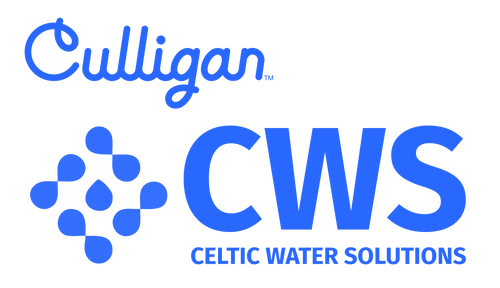In recent years, microplastics in tap water in Ireland have become a growing concern, particularly among parents who want to ensure the health and safety of their children. As awareness increases about the contaminants lurking in our everyday drinking water, many families are left wondering: Are we doing enough to protect our kids?
This article dives deep into what microplastics are, how they end up in Irish tap water, the risks they pose, and most importantly, how parents can effectively reduce their family’s exposure.
What Are Microplastics and How Do They Enter Tap Water?
Microplastics are tiny plastic particles less than 5 millimetres in diameter. They originate from a variety of sources such as:
-
Industrial waste
-
Synthetic clothing fibres
-
Cosmetic products
-
Degraded larger plastic waste
In Ireland, microplastics enter water systems through urban runoff, wastewater discharge, and the degradation of plastic waste in the environment. Unfortunately, conventional municipal water treatment processes are not fully equipped to remove these microscopic pollutants.
Once in the water system, they can easily travel into home tap water and be unknowingly consumed by every member of the household.
How Prevalent Are Microplastics in Irish Tap Water?
A 2023 study by the Environmental Protection Agency (EPA Ireland) revealed microplastics were detected in over 80% of Irish water samples tested. This included water from rivers, lakes, groundwater, and even treated drinking water.
Moreover, the European Chemicals Agency has identified microplastics as potential threats to both environmental and human health, prompting the EU to consider stricter regulations. But while legislative change is slow, the risk remains immediate.
Why Should Irish Parents Be Concerned About Microplastics?
Children are especially vulnerable to environmental toxins due to their developing immune systems. While long-term research on microplastic health effects is still ongoing, here’s what’s already known:
-
Hormone Disruption: Microplastics may leach harmful chemicals like BPA and phthalates, which have been linked to endocrine disruption, especially dangerous during childhood development.
-
Gastrointestinal Issues: These particles can cause inflammation in the gut, potentially leading to discomfort, digestive issues, and nutrient absorption problems.
-
Toxic Chemical Accumulation: Microplastics can absorb heavy metals and persistent organic pollutants (POPs), which can then be released inside the body upon ingestion.
-
Immune System Stress: Continuous exposure may compromise the immune response, making children more susceptible to infections and chronic diseases.
In short, microplastics in Irish tap water represent a real and present health concern—especially for families.
How Are Microplastics Monitored and Regulated in Ireland?
Currently, there is no legal requirement in Ireland to monitor or limit microplastics in drinking water. This regulatory gap means:
-
Public water supplies might still contain trace levels of microplastics.
-
Bottled water is not necessarily safer, with global studies showing equal or even higher concentrations of microplastics in some bottled brands.
-
Responsibility falls heavily on individual households to seek protective solutions.
While efforts are underway at EU level to implement stricter guidelines, it may take years before these come into full effect.
Effective Ways Irish Parents Can Reduce Microplastic Exposure at Home
While the situation may sound alarming, there are practical steps every Irish household can take right now:
1. Install a Reverse Osmosis Filtration System
Reverse Osmosis (RO) is one of the most effective technologies for removing microplastics and other contaminants. Systems such as those offered by Celtic Water Solutions and Culligan are tailored for Irish homes, ensuring:
-
Up to 99% of microplastics are filtered out
-
Improved taste and odour of water
-
Protection against other contaminants like lead, chlorine, nitrates, and bacteria
👉 Discover reverse osmosis systems in Ireland
2. Avoid Single-Use Plastics in Food and Drink Storage
Heating plastic containers or using plastic bottles repeatedly can cause microplastics to leach into food and water. Switch to:
-
Glass or stainless steel water bottles
-
Ceramic or glass food containers
-
BPA-free products for children’s use
3. Install Tap or Whole-House Filters
For families who prefer simpler solutions, high-quality carbon block tap filters can reduce microplastic load to some extent. However, these should be certified and replaced regularly.
4. Use a Microfibre Filter in Your Washing Machine
Up to 700,000 microfibres can be released during a single load of synthetic laundry. Installing a microfibre trap or filter like Guppyfriend or Filtrol can drastically reduce plastic pollution at the source.
Are Bottled Waters in Ireland a Safe Alternative?
Contrary to popular belief, bottled water isn’t always safer than tap water when it comes to microplastics. A 2018 study by Orb Media tested 259 bottled waters across 11 brands and found 93% contained microplastic particles.
Moreover, the environmental impact of plastic bottle consumption—especially in a country already struggling with plastic pollution—is significant. The ideal solution remains filtering your home’s tap water, ensuring both health and sustainability.
Protecting Your Family Starts with Awareness and Action
As Irish parents, the health of your children is non-negotiable. In a time when microplastics in Irish tap water are an undeniable reality, ignoring the issue is no longer an option.
Investing in a reliable filtration system is not just a precaution—it's a vital step toward securing clean, safe water for your family. Combine this with smarter everyday plastic use habits, and you can significantly reduce exposure to harmful particles.
Final Thoughts: The Time to Act is Now
Raising children in a modern world already comes with enough challenges. Let’s not allow microplastics in tap water to be one of them. The good news is, solutions exist—and they are readily accessible to Irish families.
Empowering yourself with the right knowledge and tools today can safeguard your family’s health for years to come.

